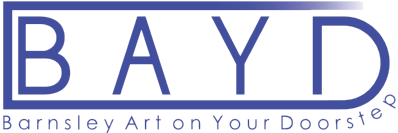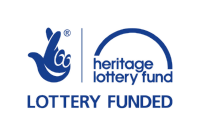Evaluation

Barnsley Art on Your Doorstep (BAYD)
Self-evaluation of the Hidden Art of Barnsley Project
The two year Hidden Art of Barnsley Project was funded by just under £50,000 from the Heritage Lottery Fund (HLF) and by £3000 from Barnsley Metropolitan Borough Council (BMBC). The HLF requires BAYD to evaluate the project to show what the results of the project’s activities have been and to highlight the extent to which BAYD’s promises in the project plan have been fulfilled. The report will be sent to the HLF and the Council in April 2015.
We had set ourselves four aims for our project plan:
1. To provide stimulating opportunities to learn about Barnsley’s past artists;
2. To Involve volunteers and to develop their pride in Barnsley and their skills and confidence;
3. To provide a website and resources so that people continue to learn about the past;
4. To give people direct contact with original works and to bring the past to life.
We grappled with the distinction between outcomes (real changes and benefits), outputs (our activities), processes (how we did it) and inputs (the time, money and materials we used). We have done a detailed monitoring report that shows that all of the detailed activities promised by BAYD were achieved, sometimes in a different but equally beneficial way to that promised and for some later than originally planned. In some cases we achieved more than promised.
The learning activities included:
- An extensive schools programme of classes and activities in 23 primary schools and three Advanced Learning Colleges
- Working with Barnsley College Games Development students and with the YMCA
- Many talks to community groups interested in local history
- A three-month exhibition at the Cooper Gallery with five well-attended public lectures and a programme of activity based workshops including storyteller sessions for children
- Four competitions
- By the end of the project 24 booklets publicly available about the hidden artists
People’s feedback from all groups and ages for these learning opportunities was universally positive. 44% of children attending activities said that they had learned a lot; 41% quite a lot. 94% of children said they would like to do similar activities again. From adults who attended a talk, 49% said they had learned a lot; 43% quite a lot. Of surveyed exhibition visitors, 95% said that there had been enough information for them and 76% said that the information had been very easy to understand with 24% saying quite easy.
We had excellent partners who were positive about the experience of working with us, particularly Barnsley Adult and Family Learning Service. Gallery. Other substantial partners were BMBC Arts, Museums and Archives, the Friends of the Cooper, the Victoria Jubilee Museum in Cawthorne, Heritage Silkstone, Horizon Community College and its cluster primary schools, Greenacre School, Holy Trinity School, Barnsley College and the YMCA. We also worked with Barnsley Civic Trust.
Volunteers who worked with us throughout the project were also very positive about the project. They highlighted to us a wide range of skills they had developed and how their confidence had been improved substantially.
This website from April 2015 will contain a great deal of information about the Hidden Artists, with brand new articles on past artists available for free download individually. A book of these will also be available to study in the BMBC Archives and Central Library. Both the website and facebook page already carry other information about the artists. This information provides a beneficial legacy for the future considering that a significant proportion of this information was not known before and most of it had not been brought together before in an accessible way.
Our aim for the stimulating and fascinating content of the exhibition was achieved to a much greater extent than we had imagined. Records of the visits and visitors’ written feedback (from 158 visitors) showed that they were uniformly full of praise for the three month exhibition and the extra show of schools’ based work at St Mary’s Church.
As often happens in projects, BAYD achieved some things that had not been foreseen. These included:
- Attracting a substantial number of visitors to the exhibition from outside Barnsley. This was good for Barnsley’s reputation nationally.
- Developing of close connections with many descendants, relatives and researchers of the past artists most of whom were from outside Barnsley and even from overseas countries. BAYD expects this connection to be of great benefit to Barnsley in the future.
Conclusion
From the evidence collected by BAYD for the evaluation, we conclude that the Hidden Art of Barnsley project was good value for money in that far more was achieved than was paid for by the grant money mainly because of the substantial volunteer time that was dedicated to the project, and arising from the significant contributions by partners from their own resources to the aims of the project. Also feedback from all those who were involved as visitors or learners or volunteers or partners was positive. This does not mean that there were not learning points that have come out of the evaluation and these are detailed in the report to the funders but they do not detract from the conclusion that this has been a successful project with a significant legacy for the future.
©Barnsley Art on Your Doorstep 2015
News Archive
- Girl with a Lamb Unveiled
- Dedication Of Nameboard At Milefield School
- We have published our book
- Dedication of a Plaque to Thomas Witlam Atkinson
- Gawber Glasshouse Information Board
- Competition Results
- Our Film
- Talks & Workshops
- Poster Competition
- Map Competition (Thomas Atkinson)
- Map Competition (Hidden Art)
- Film Competition
- Abel Hold Portrait Returns Home
News Archived
- March 2015 (6)
- February 2014 (6)
- October 2013 (1)




